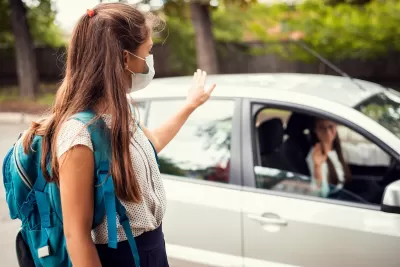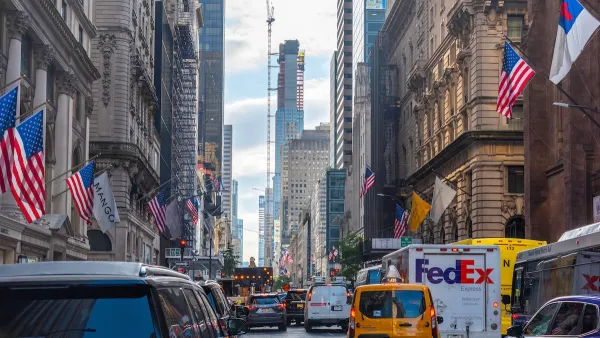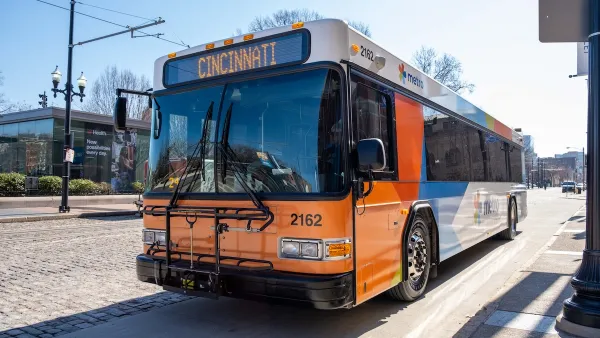School drop-off lines are becoming longer and more isolating than ever.

With more parents than ever before driving their children to school, school drop-offs are becoming a growing pain point for traffic in cities around the country, writes Kendra Hurley in The Atlantic.
The problem is multi-faceted: “For families, the long waits are at best a stressful time suck and at worst a work disruptor. Some city planners take the car line as proof of our failure to create the kind of people-centered neighborhoods families thrive in. Climate scientists might consider it a nitrogen-oxide-drenched environmental disaster. Scolds might rail at what they see as helicopter parents chaperoning their kids everywhere. Some pediatricians might point out the health threats: sedentary children breathing fumes or at risk of being hit by a car.”
For Hurley, another important aspect of the ever-growing school drop-off line is the attendant isolation. “With so many kids now attending schools more than a mile from their home, even the most beautiful, pedestrian-friendly streets may not be enough to lure passengers to the sidewalk. A leisurely stroll to a neighborhood school has been supplanted by the smelly, alienating car line.”
Hurley acknowledges that walking, biking, or public transit are not readily available modes for many American students. “But governments, schools, and communities can create new programs to fill the transportation gap” by proactively arranging walking and biking groups and urging local officials to add better bike and pedestrian infrastructure to their streets. “For families that must drive, the humble carpool can offer the same convenience and safety from crime as driving on your own, while also building camaraderie and minimizing emissions.”
FULL STORY: How School Drop-Off Became a Nightmare

Maui's Vacation Rental Debate Turns Ugly
Verbal attacks, misinformation campaigns and fistfights plague a high-stakes debate to convert thousands of vacation rentals into long-term housing.

Planetizen Federal Action Tracker
A weekly monitor of how Trump’s orders and actions are impacting planners and planning in America.

In Urban Planning, AI Prompting Could be the New Design Thinking
Creativity has long been key to great urban design. What if we see AI as our new creative partner?

Pedestrian Deaths Drop, Remain Twice as High as in 2009
Fatalities declined by 4 percent in 2024, but the U.S. is still nowhere close to ‘Vision Zero.’

King County Supportive Housing Program Offers Hope for Unhoused Residents
The county is taking a ‘Housing First’ approach that prioritizes getting people into housing, then offering wraparound supportive services.

Researchers Use AI to Get Clearer Picture of US Housing
Analysts are using artificial intelligence to supercharge their research by allowing them to comb through data faster. Though these AI tools can be error prone, they save time and housing researchers are optimistic about the future.
Urban Design for Planners 1: Software Tools
This six-course series explores essential urban design concepts using open source software and equips planners with the tools they need to participate fully in the urban design process.
Planning for Universal Design
Learn the tools for implementing Universal Design in planning regulations.
planning NEXT
Appalachian Highlands Housing Partners
Mpact (founded as Rail~Volution)
City of Camden Redevelopment Agency
City of Astoria
City of Portland
City of Laramie





























